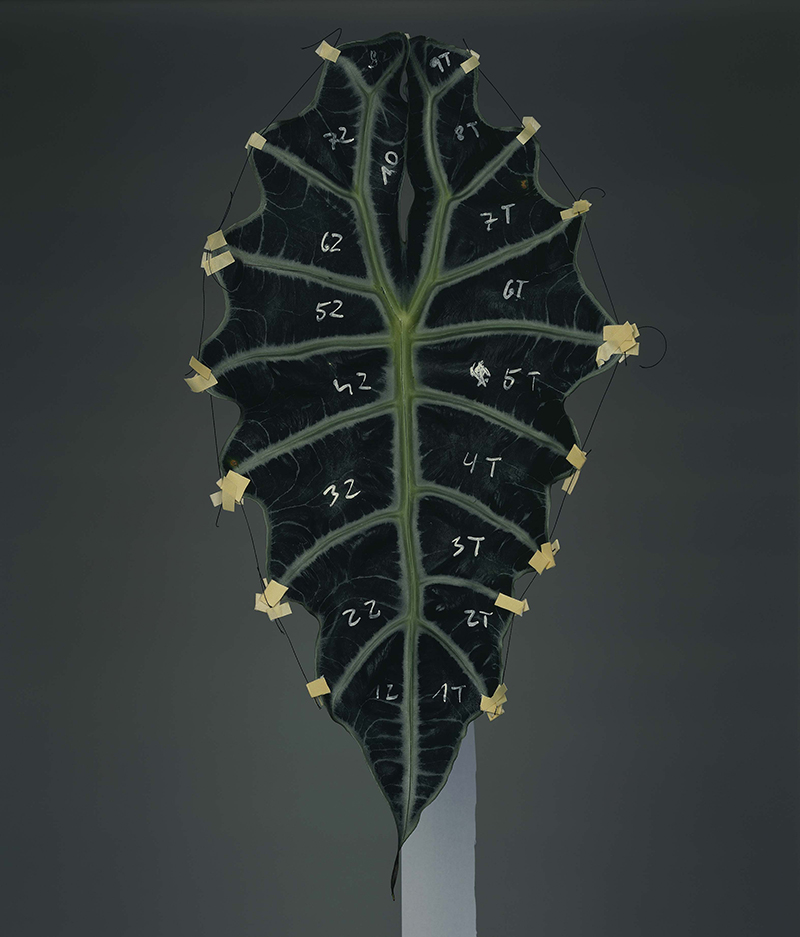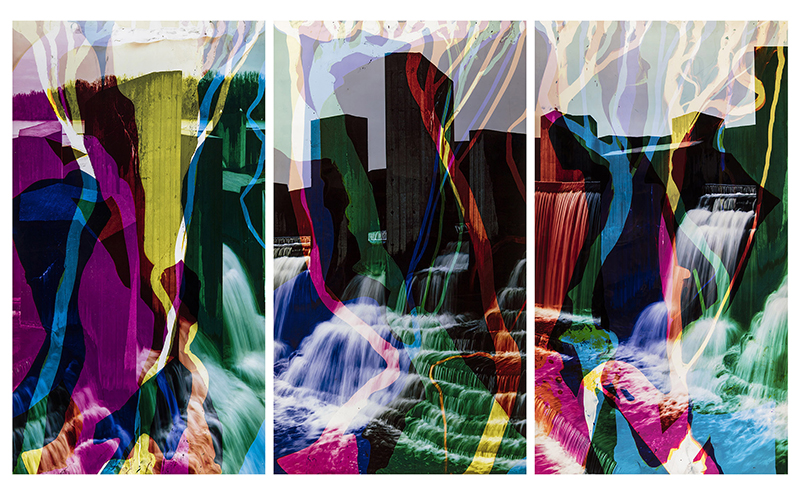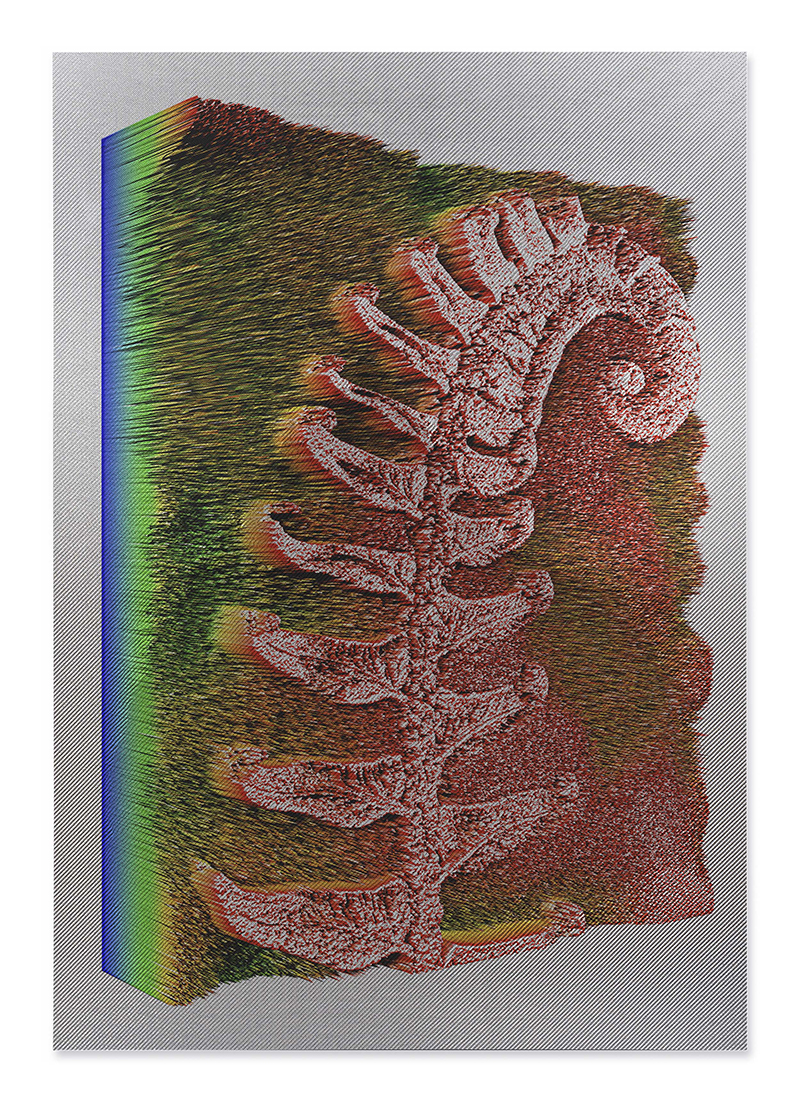Back to the Future : l’irrésistible exposition au FOAM d’Amsterdam.
(English version included below)

Post photography, after photography, para photography : les termes pour parler de ce que sera la photographie de demain fleurissent. Ils renvoient à un désir de taxinomie (celui qui nomme le premier acquiert une sorte de droit à la propriété sur cette terre vierge) mais aussi une certaine angoisse face à ce que peut être le futur du médium photographique.
Ici, en France, certaines galeries (Galerie Binome, Galerie Christophe Gaillard) ou certaines manifestations (le salon Approche qui s’est tenu à Paris en novembre dernier) sont à la pointe de cette tendance à chercher/pousser la photographie de demain. J’avais moi-même, en tant que commissaire, creusé partiellement ce sillon à travers l’exposition « L’Objet Photographique » (Immixgalerie, 2016). Un peu plus au nord, le FOAM d’Amsterdam remet régulièrement cette problématique sur le tapis, une voie qu’empruntent de nombreux jeunes artistes sélectionnés chaque année pour les Foam Talents.

Le FOAM, c’est un amour de musée : un espace d’exposition pas forcément simple ni limpide (je n’arrive pas très bien à lire le lieu, mais j’ai l’impression qu’il est à cheval sur au moins deux maisons amstellodamoises). Mais une direction artistique exemplaire : un pied dans l’histoire de la photographie (actuellement, le mythique reportage de Jacob Riis dans les bas-fonds new-yorkais, pionnier de la photographie engagée et activiste) ; et l’autre pied dans l’actualité la plus brûlante de la photographie, et même dans son futur, avec souvent de très jeunes photographes. Le tout présenté avec une parfaite rigueur d’accrochage et de documentation, et des tirages d’une beauté époustouflante. Bref, quelques heures au FOAM, c’est une des meilleures façons d’entretenir votre amour de la photographie.
« Back to the Future » : ça vous rappelle quelque chose ? Ah oui, un de ces films condamnés à être cultes puisque la seule façon de les revoir nous contraint à accepter de fermer les yeux sur leurs défauts ! Mais n’ayez crainte, il n’est question dans cette exposition que de reprendre certains arguments du film : une lecture du passé anticipatrice du présent, un goût certain pour l’anachronisme qui se révèle drôle ou fécond, quelques paradoxes vertigineux, et surtout, des jeux d’échos, de formes ou de processus. Voyez plutôt :


C’est tout le propos de cette exposition : dresser des ponts entre la photographie du XIXème et celle du XXIème siècle. En échappant à la problématique simpliste qui consiste à croire que le retour aux techniques anciennes de tirage n’est qu’un effet de mode ou un alibi pour donner de la valeur à des oeuvres qui en sont cruellement démunies.
L’intérêt majeur de « Back to the Future », c’est de radicaliser les questionnements sur le medium photographique pour mieux approcher son essence, son rapport au temps et à la lumière. Pour mieux cerner ce qui se poursuit aujourd’hui de la quête originelle, autant dans l’aspect technique que dans l’attitude du chercheur (scientifique ou artiste, parfois les deux) face au monde.
Alors, bien sûr, on se laisse enchanter par les oeuvres et étourdir par des techniques qui seraient parfois impossibles à dater sans les cartels. Et les allers-retours temporels ont un effet majeur : rendre leur épaisseur aux objets du monde.
Ainsi, quant un cyanotype se déploie en trois dimensions, suspension de voiles bleutés aussi aériens qu’une aile de raie nageant dans un aquarium, le très contemporain Adam Jeppesen enjambe-t-il plus d’un siècle et demi de photographie pour danser avec l’éternelle Anna Atkins et ses merveilleux cyanographes d’algues marines.
C’est ça une exposition au FOAM: de l’intelligence nappée de merveilleux.
Vite, vite, l’exposition Back to the Future dure jusqu’au 28 mars, toutes les infos ici

English version
Back to the Future: the irresistible exhibition at FOAM in Amsterdam.

Post photography, after photography, para photography: the words to talk about what will be the photography of tomorrow are blooming. They refer to a desire for a taxonomy (the one who names the first one acquires a kind of property right on this virgin land) but also a certain anxiety about what the future of the photographic medium may be.
Here in France, some galleries (Galerie Binome, Galerie Christophe Gaillard) or certain events (the Salon Approche held in Paris last November) are at the forefront of this tendency to search for and push the photography of tomorrow. I myself, as curator, had partially dug this furrow through the exhibition « The Photographic Object » (Immixgalerie, 2016). A little further north, the FOAM Amsterdam regularly explores this issue, a path taken by many young artists selected each year for the Foam Talents.

FOAM is a love of museums: an exhibition space that is not necessarily simple or clear (I can’t really read the place very well, but I have the impression that it straddles at least two Amsterdam houses). But an exemplary artistic direction: one foot in the history of photography (currently, Jacob Riis’s mythical report in the New York shallows, pioneer of committed and activist photography) and the other foot in the hottest topicality of photography, and even in its future, often with very young photographers. All presented with a perfect rigour of hanging and documentation, and prints of breathtaking beauty. In short, a few hours at FOAM is one of the best ways to nurture your love of photography.
« Back to the Future: does that ring a bell? Oh yes, one of those films doomed to be cult, because the only way to see them again is forcing us to close our eyes to their flaws! But don’t be afraid, in this exhibition it is only a question of repeating some of the film’s arguments: a reading of the anticipatory past of the present, a certain taste for anachronism that turns out to be funny or fruitful, some vertiginous paradoxes, and above all, games of echoes, forms or processes. Check it out:


This is what this exhibition is all about: bridging the gap between 19th and 21st century photography. By escaping the simplistic problem of believing that returning to old printing techniques is simply a fashion effect or an alibi to give value to works that are cruelly destitute.
The main interest of « Back to the Future »is to radicalize the questioning of the photographic medium in order to better approach its essence, its relationship with time and light. To better understand what continues today of the original quest, both in terms of the technical aspect and the researcher’s attitude (scientific or artist, sometimes both) towards the world.
So, of course, we let ourselves be enchanted by the works and stunned by techniques that would sometimes be impossible to date without the cartels. And the temporal round trips have a major effect: they give back their thickness to the objects of the world.
Thus, when a cyanotype unfolds in three dimensions, suspending blue veils as airy as a manta ray swimming in an aquarium, the very contemporary Adam Jeppesen spans more than a century and a half of photography to dance with the eternal Anna Atkins and his wonderful cyanographs of seaweed.
This is an exhibition at the FOAM: intelligence and marvelous beauty.
The exhibition Back to the Future lasts until March 28th, all info here

